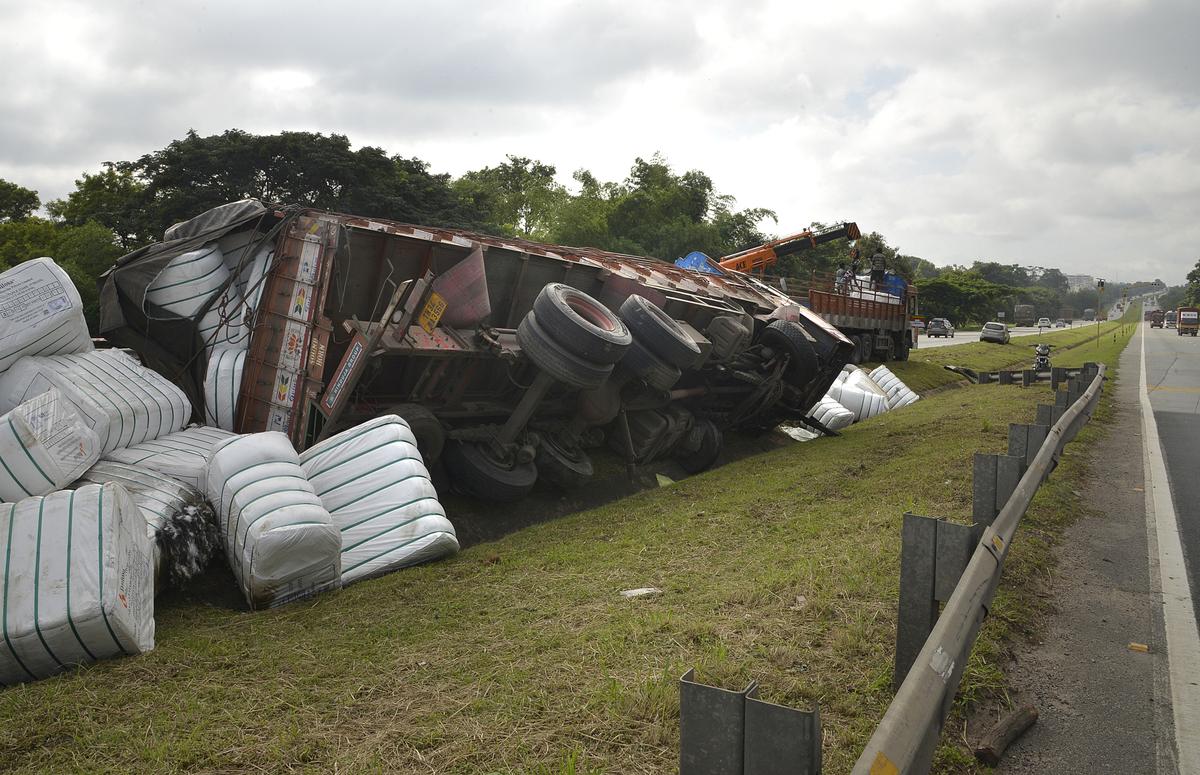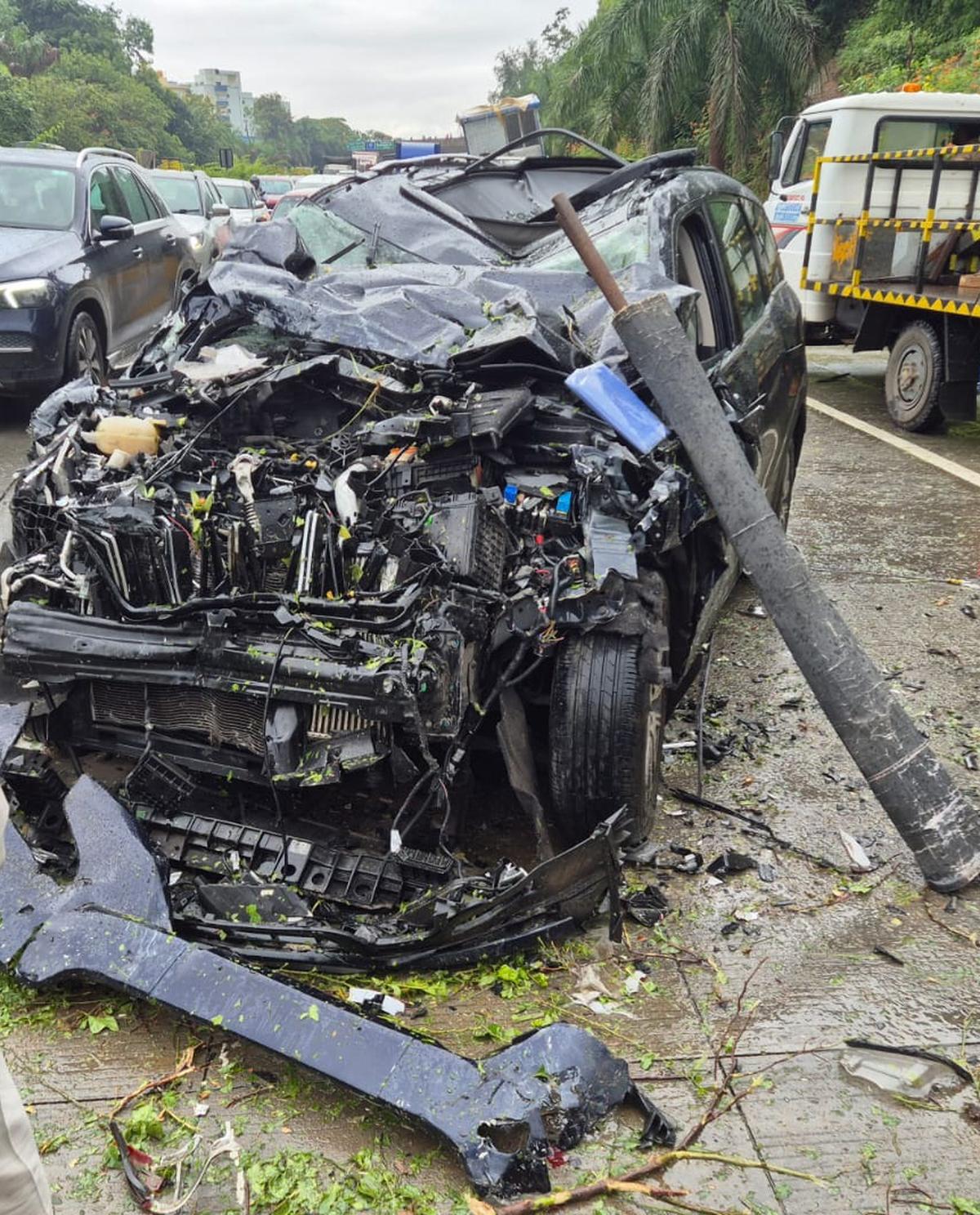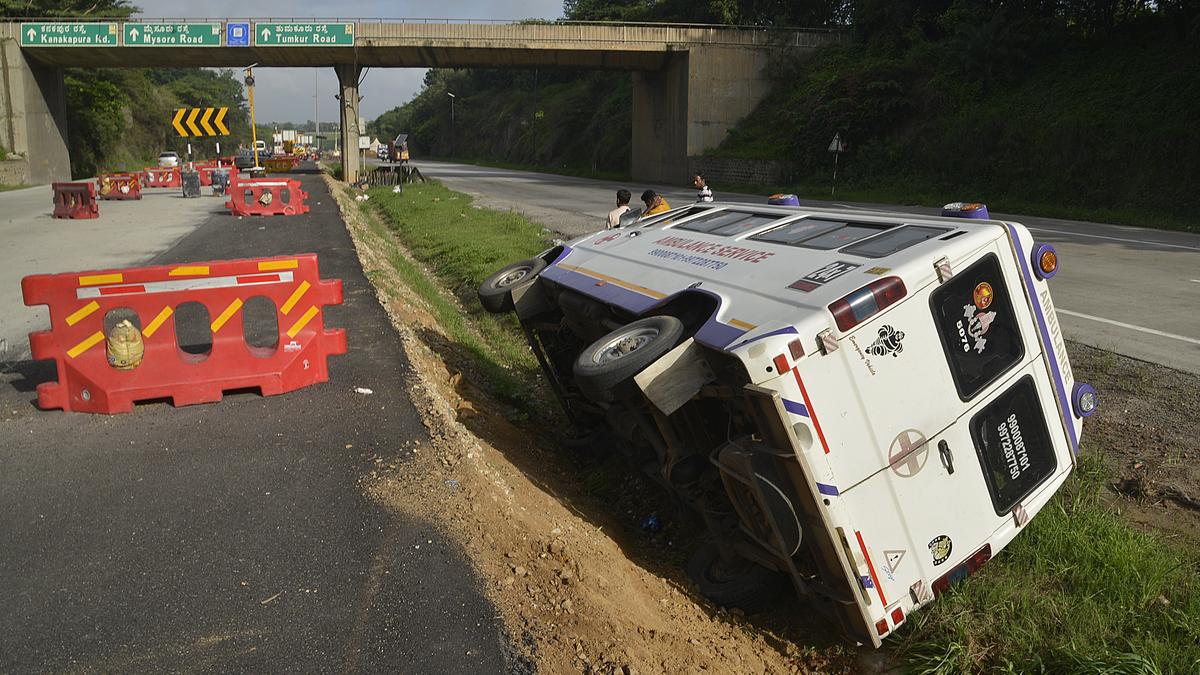Fancy motorbikes and cars, access-controlled roads, a fixation with signal-free corridors… This perfect recipe for ultra-high speeds without stringent road safety standards has pushed Bengaluru beyond the deep red danger mark. Road accidents claimed an alarming 991 lives in the city last year, and this figure is not going anywhere south in 2024. Why aren’t the alarm bells ringing?
Yes, mounting fatalities have finally pushed the city police to fix a speed limit on the access-controlled NICE road and ban two-wheelers between 10 p.m. and 5 a.m. But beyond reckless riding and driving, a big question mark hangs over poor road design as well. The unacceptably high number of accidents on the Bengaluru-Mysuru Expressway soon after its launch, should have been a wake-up call.
Ninety-two fatal accidents were recorded between 2022 and June 2024 on NICE road. The police attributed most of these to reckless driving and speeding. But what if the road design had enough safety features integrated to minimise these accidents?
Exclusion of local road-users
To understand these safety structures, there is a need to question the assumption on which the ‘access-controlled’ mega highways such as NICE road and the Expressway are designed. As Chetan Sodaye, Program Manager, Integrated Transport and Road Safety, World Resources Institute (WRI) points out, only a particular set of users are ‘assumed’ to take these highways. “It excludes other road users from villages that the corridor cuts through. This creates conflict points,” he notes.
Inevitably, in the absence of any safe way to cut across the corridor, local vehicles get onto the high-speed motorway triggering accidents. This, Chetan says, is not foreseen in the corridors’ Detailed Project Reports (DPRs) and the design does not integrate ways to bypass the problem. The solution is to first identify the local need for access right at the planning stage, and provision foot over bridges or even grade separators.

A truck lost control and fell on a slope in the middle of NICE road in Bengaluru. | Photo Credit: BHAGYA PRAKASH K / THE HINDU
Rumble strips
Drivers approaching these identified crossing points could be alerted through strategic placement of rumble strips, a traffic-calming feature. “Multiple signages could also warn the driver that something is coming up. It is critical to make drivers aware of the corridor’s designed speed and the need to slow down at spots known for potential counter movements,” adds Chetan.
The road design often fails to anticipate the trend of wrong-side driving, acknowledged as the cause of many accidents. “If the need for such an access that leads to wrong-side driving / riding is identified, a service road stretch with two-way movement at low speeds could be allowed. This can have multiple speed humps and raised crossings for pedestrians.”

A car met with an accident on NICE road today. | Photo Credit: HANDOUT E MAIL
Coordination gaps
Robust road engineering can nip accidents in the bud. But this mandates coordination between the agencies that build the roads and related infrastructure and the city traffic police. Deputy Commissioner of Police, Traffic-East, Kuldeep Singh Jain flags gaps in consultation. “No one consults us and no one knows actually where the real problem could be, and what could lead to what,” he notes.
The agency concerned might have applied basic road engineering principles to ensure safety. “But when the traffic moves, then we suddenly realise the problems. That is when the actual interaction starts,” says the officer.
The city police have speed gun detectors on the Airport Corridor and the NICE road now. But this needs sufficient space, says Kuldeep. “We have determined speed limits for different categories of vehicles, right from two-wheelers to heavy vehicles. Fines are collected based on the category,” he informs.
High-end, high-capacity motorcycles pose a problem of speed. So do electric vehicles that are less than 50CC, he says. “Basically, they are treated in the category of bicycles. They don’t wear helmets, and come in the opposite direction. We can’t fine or stop them. These add to our challenges.”
To enhance safety, the police are enforcing strict lane discipline on these access-controlled corridors. “It is not easy to implement this everywhere in Bengaluru. But we are doing it on these high density and elevated corridors where it is implementable,” explains Kuldeep.
Segregate vehicles
But the police should segregate slow-moving and fast-moving vehicles, says traffic and transportation analyst M.N. Sreehari. He elaborates, “Separate lanes should be created, not by demarcating with paint. They should install some kind of physical barrier. Even fast-moving vehicles should not be allowed to go beyond 60-80kmph on urban roads, which were designed for 40-60kmph only.”
Since the police are equipped with a big number of speed cameras, the focus should be on young motorcyclists in the age group of 20-25 years performing ‘wheelies’ and other stunts endangering every other road-user. “Their vehicles should be confiscated. The RTOs should cancel their licenses like in many other countries. Here, the government is happily sleeping over this issue.”
As Chetan reminds, many speedsters have learnt to game the system by spotting the cameras on Google Maps. “This is a tactic to avoid fines. Maybe our road infrastructure could be designed in a way that you cannot go beyond the speed limit. That is the free flow speed.”
Reduce high ‘Free-flow speed’
The ‘Free-flow speed’ (FFS) is the average speed that a motorist would travel if there were no congestion or other adverse conditions. “Sadly, our infrastructure is heavily designed for very high FFS but the signage reminds that this is still an 80kmph corridor. You design a road where the speed can go even 180kmph, you have a vehicle that can throttle to that speed,” he notes.
If the intention is to build the road for 80kmph, the design itself should not allow you to go beyond that speed. “On Mumbai Pune highway, there is a forced deflection on the road, then automatically drivers will be forced not to go beyond a speed. This is more enforceable than mere speed cameras.”
Additional Director General of Police, M.A. Saleem, who had headed the overall management of the city traffic for years, insists that there can be no compromise with the enforcement of speed limits. “Any small mistake can be very fatal for all road-users. Speed limits have to be properly enforced on access-controlled roads. We have a good number of toll booths, where the violators can be flagged and their vehicles detained.”
The toll boost is also the ideal place to watch the violations caught on camera, detain the vehicle and challan the violator. As he explains, “Many vehicles on NICE road, for instance, may not be from the city. They may be heading to Kerala or Tamil Nadu. It would be very difficult to send them notices and ensure payment of penalties. Challan them before they go out of the radar.”


